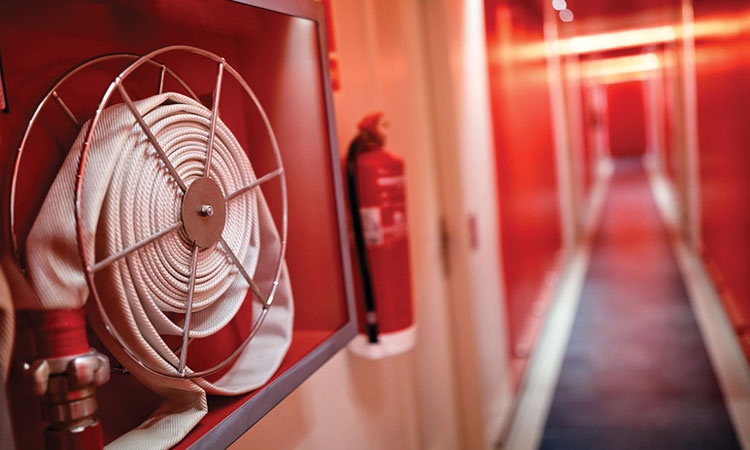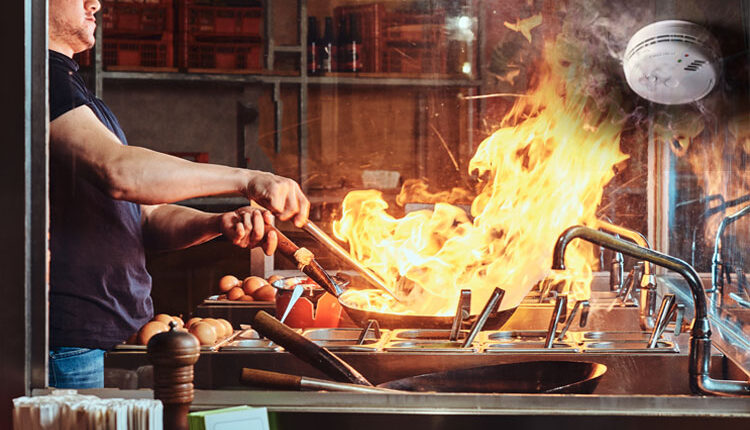The hospitality sector thrives on comfort, care, and the creation of memorable experiences. Whether it’s a luxurious five-star resort, a cozy boutique hotel, or a bustling restaurant in the heart of the city, guests step into these spaces with an expectation of safety and security. Yet behind the glittering chandeliers, crisp white linens, and impeccable service lies a critical and non-negotiable pillar of operations—fire safety.
In an industry where the slightest mishap can cascade into chaos, fire safety is not just a regulatory box to be ticked—it’s a matter of life, reputation, and business continuity. Fires in hotels and restaurants, though statistically rare, have historically proven to be catastrophic when safety measures are neglected. The challenge lies in balancing aesthetics and ambiance with strict adherence to safety protocols, all while ensuring minimal disruption to guest experience.
What makes fire safety particularly crucial in hospitality is the complexity and vulnerability of the environment. Hotels are typically multi-story buildings housing hundreds of guests, many of whom may be unfamiliar with the layout. Restaurants deal with open flames, electrical appliances, hot oils, and flammable decor—all within a compact space buzzing with activity. Banquet halls, kitchens, lounges, spas—each comes with its own set of fire risks. Add to this the high occupancy rates, varied demographics, and sometimes language barriers, and the task of fire preparedness becomes even more demanding.
The Anatomy of Risk
Fire risks in hospitality stem from multiple sources. In kitchens, the combination of open flames, gas connections, oil splashes, and electrical equipment is an obvious hazard. In guest rooms, overloaded sockets, faulty appliances, smoking, or even scented candles can trigger a blaze. Common areas like lobbies and lounges, decorated with plush furniture, drapes, and floral arrangements, can quickly become fuel for fire if sparked. Even back-of-house operations—laundries, storerooms, and boiler rooms—carry their share of risks, especially if maintenance is lax or materials are poorly stored.
Yet, the biggest risk isn’t the ignition source itself, but the delay in detection, notification, and evacuation. Guests may be asleep, intoxicated, disabled, or unfamiliar with exit routes. Staff might be untrained or unsure of protocols. In such scenarios, seconds matter. Early detection and fast response are critical to saving lives and minimizing damage.
Building the Shield: Fire Safety Systems
A robust fire safety framework in hospitality is built on four pillars: detection, suppression, evacuation, and education.
1.Detection Systems:
Smoke detectors, heat sensors, flame detectors, and multi-sensor alarms form the first line of defense. These devices must be strategically placed throughout the premises—guest rooms, corridors, stairwells, kitchens, electrical rooms, and service areas. The fire alarm system should be connected to a centralized fire control panel, monitored 24/7, with integration to emergency lighting and public address systems. Smart fire alarm systems can now pinpoint the exact location of fire, enabling faster action.
2. Suppression Systems:
Once a fire is detected, the focus shifts to suppression. Sprinkler systems remain the most effective passive tool in this regard. In kitchens, specialized fire suppression systems using wet chemicals are designed to deal with grease fires and high-heat zones. Fire extinguishers—of different classes (A, B, C, K)—must be placed throughout the property, easily accessible, and regularly inspected. Larger properties often include fire hydrant networks, hose reels, and fire pump systems to ensure adequate water supply and pressure. Some high-end hotels also deploy water mist systems or clean agent systems in sensitive areas like server rooms.
3. Evacuation Planning:
Evacuation is where theory meets reality. Fire exits must be clearly marked, illuminated, and unobstructed at all times. Staircases should be smoke-proof, with self-closing fire-rated doors. Emergency lighting, exit signage, and evacuation maps must be visible to all guests. Elevators must be automatically disabled during fire, and voice-guided PA systems should provide real-time evacuation instructions in multiple languages. Trained staff or floor wardens are essential to guide and assist during evacuations, especially for elderly or disabled guests.
4. Education and Drills:
No system can succeed without people who know what to do. Staff training is arguably the most overlooked aspect of fire safety in hospitality. From housekeeping to kitchen staff, every employee must undergo fire safety orientation, be familiar with emergency exits, and know how to use an extinguisher. Regular fire drills are mandatory—not just to meet compliance, but to instill confidence and clarity during real events. The front desk must also be trained to handle panic, communicate calmly, and guide guests to safety.

Compliance and Certification
Fire safety in hospitality isn’t just best practice—it’s legally mandated. Across countries, fire departments and safety bureaus have stringent norms for building design, system installation, maintenance, and documentation. Hotels and restaurants must secure a Fire NOC (No Objection Certificate) from local authorities, which requires passing rigorous inspections.
Moreover, certification by global bodies like NFPA (National Fire Protection Association), UL, FM, or BIS ensures that fire equipment and systems adhere to international standards. Increasingly, insurance companies are also demanding fire safety audits as a prerequisite for coverage. A lapse in compliance can result in penalties, closures, or worse—litigation in the event of casualties.
Designing for Safety
Modern hospitality architecture is now embracing fire-safe design. Materials used in construction and interiors are chosen for fire resistance. Compartmentalization of spaces through fire-rated walls and doors prevents spread. Ventilation systems are designed to stop smoke circulation. Fire doors, automatic shutters, and smoke extraction fans are integrated seamlessly into the building’s HVAC systems. The aim is to create a safe envelope that delays fire propagation and buys time for evacuation and response.
Technology and Innovation
Technology is rapidly transforming fire safety in the hospitality sector. Smart building management systems (BMS) now integrate fire alarms with HVAC, access control, lighting, and surveillance systems. AI-driven fire detection, using video analytics, can spot abnormal heat signatures or smoke even before traditional sensors trigger. IoT-based fire pumps and hydrants send alerts for pressure drops or maintenance needs. Cloud-based dashboards allow safety managers to monitor fire systems across multiple properties from a single interface.
In high-risk zones like kitchens, infrared sensors, flame detection cameras, and automatic suppression nozzles provide real-time safety. Fire mapping software, used in hotel chains, allows virtual simulation of fire scenarios and planning of better response strategies. These technological leaps are not just making properties safer, but also more transparent and insurable.
The Human Element
Despite all the systems and sensors, it is ultimately the human response that defines the success of fire safety. The role of leadership in hospitality—owners, GMs, facility managers—is crucial. Safety should be woven into the culture of the organization, not treated as an occasional drill or checklist. Fire safety committees, regular audits, refresher training, guest information leaflets, and collaboration with local fire departments go a long way in fostering preparedness.
Furthermore, guest communication is key. Simple steps like including emergency exits on keycards, having bilingual evacuation signage, and short orientation videos on in-room TVs can significantly improve guest awareness without disrupting their experience.
Conclusion: Safety as Hospitality
In the world of hospitality, safety is service. Fire safety, in particular, is an invisible promise that every guest counts on, often without realizing it. It is what allows people to relax, dine, sleep, and celebrate with peace of mind. For hoteliers and restaurateurs, investing in fire safety is not an expense—it is an assurance, a reputation safeguard, and a mark of professionalism.
As cities grow taller and experiences get more immersive, the complexity of fire risks will only increase. But with smart systems, skilled staff, and strong safety culture, the hospitality sector can not only prevent disasters but also lead by example in crisis management. Because when the fire alarm rings, it’s not just about how fast the response is—but how prepared everyone was before it rang.


